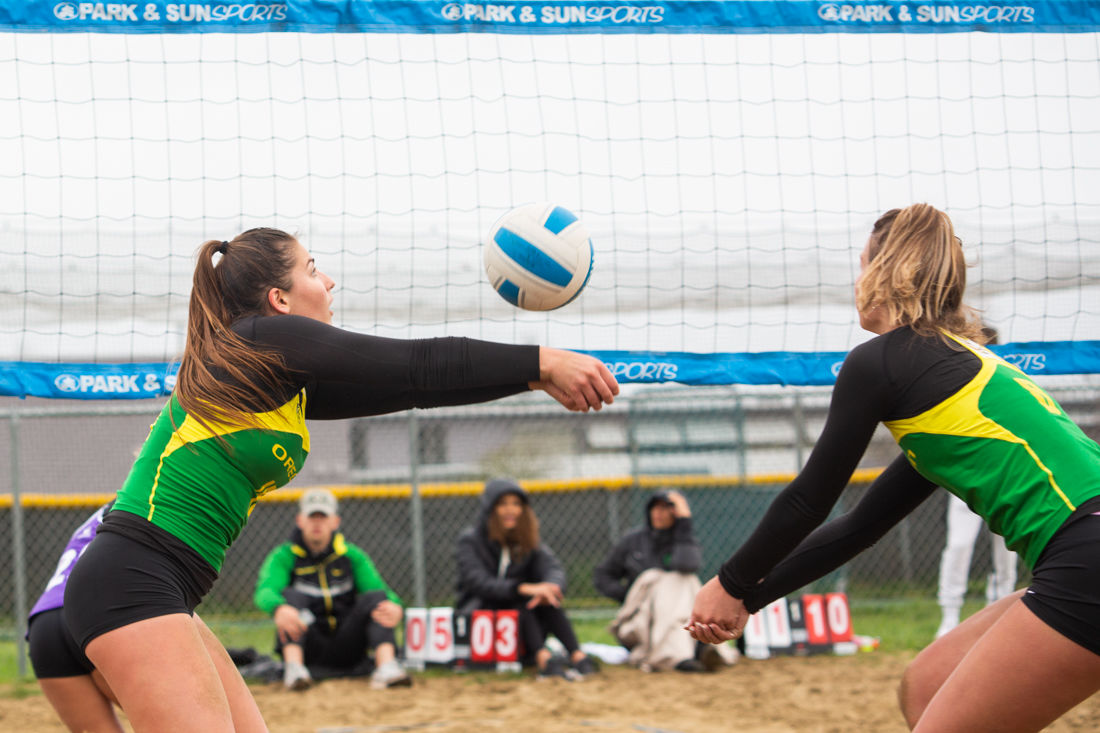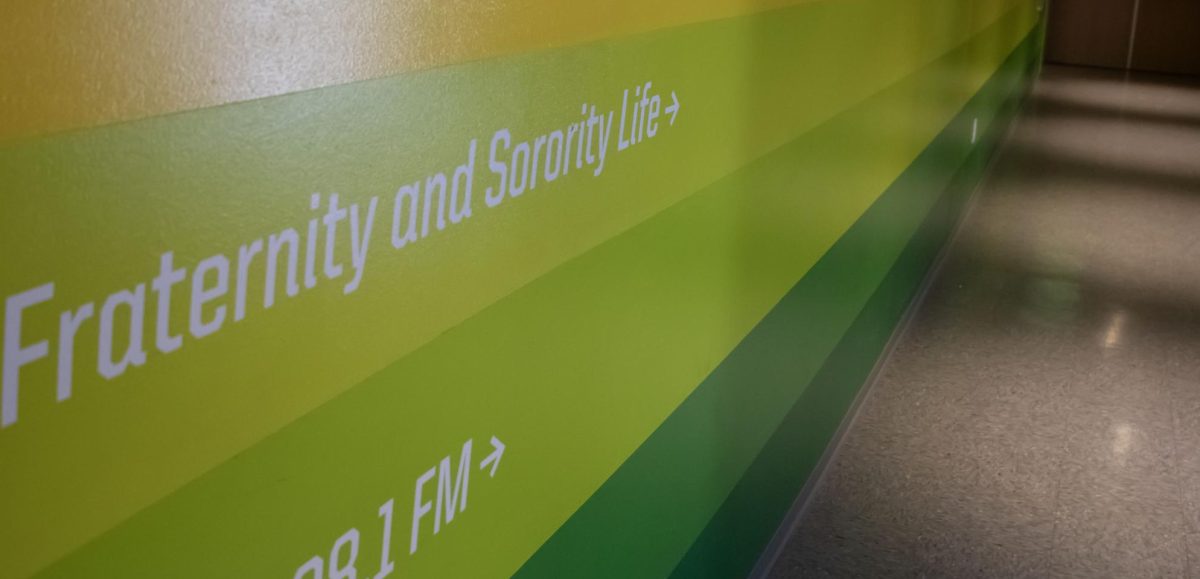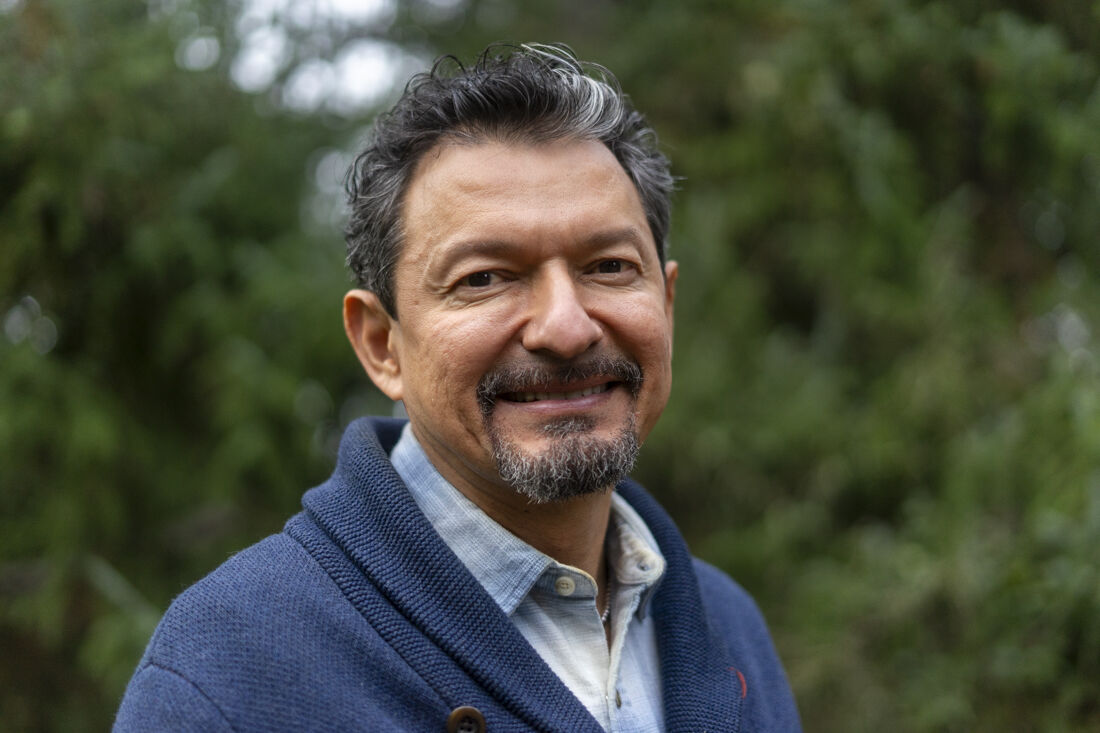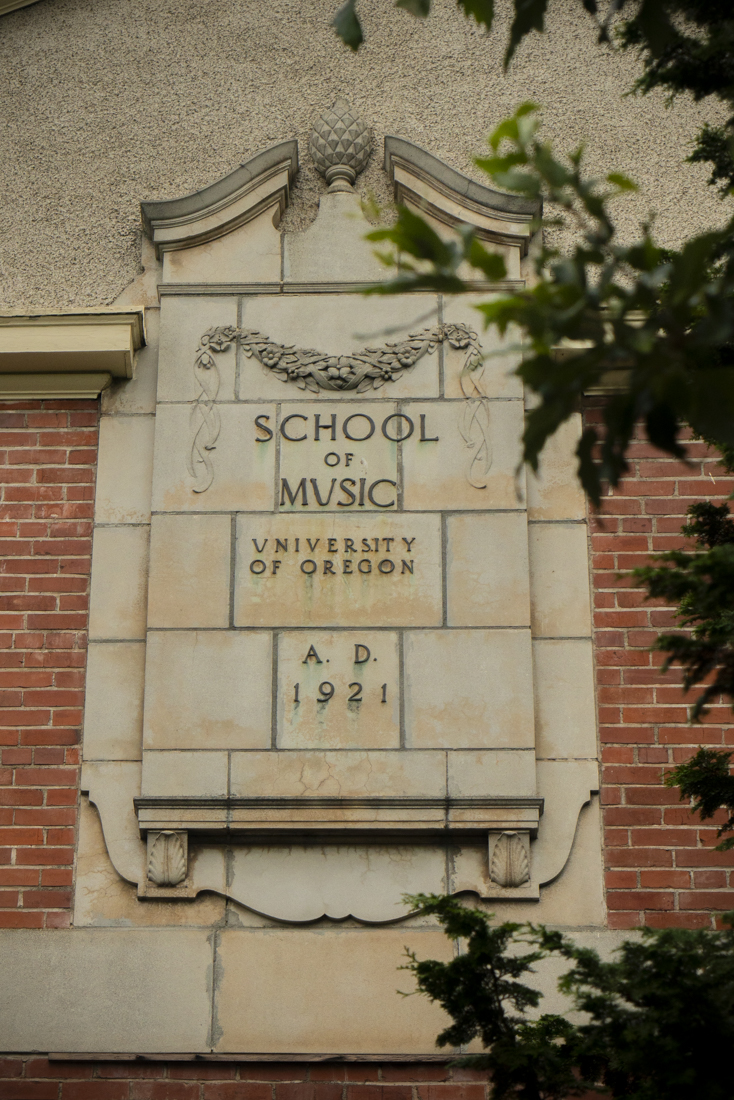The wind in Sydney Weddle’s hair wakes her up as she settles into her rowing boat in the brisk morning air. As she and her team get ready to compete after practicing alone for months before, she sees the rows of women doing just the same in their boats and all for the same purpose — to break the current going against them.
Weddle, a UO sophomore, is one of 14 students on the women’s club rowing team. On Sept. 27, a national law firm representing them and the women’s beach volleyball team told the Daily Emerald that they would be filing a lawsuit against UO for alleged Title IX violations.
On Oct. 3, numerous community members packed into a tense and tight room at the EMU for the school’s Campus Planning Committee meeting. The topic at hand during the CPC meeting was where to place the women’s beach volleyball team’s new, on-campus practice and game venue.
“What’s the cost of moving a sand court?” Michael Harwood, the associate vice president for the Campus Planning and Facilities Management, asked during the meeting.
Title IX is a federal law that prohibits sex discrimination against all academic institutions receiving federal funding and requires them, including UO, to provide equal treatment to both female and male student-athletes. It also requires those institutions to provide equal opportunities to participate in intercollegiate athletics.
The teams claim that UO is violating Title IX by discriminating against women athletes through a lack of equitable financial aid, poorer sports venues compared to men’s sports and a disproportionately low number of female varsity student-athletes when compared to their male counterparts.
In a statement to the Emerald, UO wrote “we strive to comply with all prongs of the three-part test [of Title IX], and as with many universities, relies most heavily on prong three, that the institution is fully and effectively accommodating the interests and abilities of the underrepresented sex.”
Beach volleyball complaints are 10 years in the making
The women’s beach volleyball team currently practices at Amazon Park, a public park in south Eugene, making it the least expensive venue compared to all other sports, including men’s sports. The difference in the quality of practice facilities for men’s sports versus women’s sports could be considered a Title IX violation, according to Arthur Bryant, the head lawyer representing the women athletes.
“The limitations [of the Amazon Public Park] severely hamper our ability to host events,” Title IX Coordinator Valerie Johnson said. It’s those limitations, which went largely unaddressed for a decade, that sparked the lawsuit.
In order to comply with Title IX, women’s beach volleyball would need to be provided an “equal” practice facility to that of a men’s practice facility. On Sept. 27, UO wrote to the Emerald that “UO Athletics has been working with Campus Planning since 2019 to identify a site to build an on-campus Beach Volleyball facility.”
However, “meeting one” for CPC to discuss where to locate a facility for beach volleyball took place on Oct. 3 of this year, ten years after the team was created.
According to Harwood,“the first step to being included in the Campus Plan is [through] meeting one.”
In August, Rob Mullens, UO’s athletic director, said to the Emerald, “we’ve been working with campus planning to find a site. We have money in a foundation account so we’ve just got to find a site.”
Yet a site recommendation for beach volleyball’s new practice facility was not realized by the CPC until roughly two months after Mullens’ statement, and three years after UO began to research a site for the new facility.
Mullens said this is due to a “green light” not being given by the CPC to start building a new facility.
The university’s full statement on the lawsuit can be found here.
During the meeting, CPC supplied a list of site options for the new beach volleyball facility. The recommended site by CPC was “Site A,” which is where Hamilton Hall currently resides.
The committee recommended the site because of its proximity to Matthew Knight Arena for convenience to the athletes, its ability for student use and because the new courts won’t displace any current buildings.
If the beach volleyball team were to practice on the singular sand court such as the court next to Carson Hall on campus that students and clubs frequent, the team would still not be able to host home games because of its failure to meet the NCAA three-court requirement for conducting events.
“Site A” would provide beach volleyball with three courts and the ability to host games.The site would be “temporary” until a future building site is imagined by CPC, making the facilities for beach volleyball still subject to change in the future.
“Temporary doesn’t sound great, but we’re certainly happy to be back on campus,” beach volleyball coach Jason Dillard said. “We just want to be on campus and close to home.”
The committee voted 8-2 to approve “Site A” as the facility recommendation to UO president John Karl Scholz. The beach volleyball facility, according to CPC, is expected to finish in the fall of 2025.
Club rowing fights for recognition
In order for UO to comply with Title IX, the university’s athletic program would need to add 94 more female varsity athletes to reach gender parity with the number of varsity male athletes, according to Bryant, a lawyer for Bailey & Glasser with years of experience fighting Title IX cases.
This is where UO’s women’s club rowing team comes into play. The 14 members of the rowing team could lessen — but not erase — this gender gap. But according to Bryant, UO’s lawyers said they won’t “even consider” making the team a varsity sport.
“I know that in my time here, I’m not going to be D1,” Weddle said. But the impacts it will make on the young girls wanting to participate in varsity beach volleyball and rowing are worth the work that needs to be done, Weddle said.
There are 1,987 more female undergraduate students than male undergraduate students at UO, according to Equity in Athletics Data Analysis. This means that roughly 55% of undergraduates are women at UO. But, according to a letter sent to President Scholz by Bailey & Glasser on Aug. 29, “women are just over 49% of the varsity athletes at Oregon.”
This lack of gender proportionality is also a potential Title IX violation for the university.
Under Title IX, any athlete of a university — varsity or not — should be given equal opportunities to participate in intercollegiate varsity sports. According to the Aug. 29 letter, “Oregon fails that test.”
In 2003, UO had the chance to bump the team to varsity status, but chose women’s lacrosse instead. Other sports that were considered for varsity included gymnastics, swimming and diving, water polo and equestrian.
Women’s club rowing hasn’t received the opportunity to compete on a varsity level in 20 years.
Weddle said when the team gets alone time, the lawsuit often comes up in conversation. The spirit amongst the team remains uplifting throughout its conversations, even if her and some of her teammates express worry.
“When it really comes down to it, we’re suing the school that we attend, but it’s a matter of the bigger picture and I think we’re all such excellent women that we need to be able to do that for somebody else,” she said.
Weddle said the love for the sport overpowers the fear some may have at the end of the day.
“We love the sport so much and I hope [UO] knows that because we love our cousins or our sisters or nieces that we would imagine that we’re in their spot and being able to truly say ‘I’m fighting for you,’” she said about why the lawsuit matters to her.
Male athletes are getting more money
Under Title IX, men’s and women’s sports must receive equal financial aid.
But according to EADA, men’s sports received $6.9 million in “athletically-related Student Aid” during the 2021-2022 school year, while women’s sports received $5.9 million the same year, making a difference of roughly $1 million between the two.
Women’s beach volleyball has received no financial aid in its 10-year history. In a statement to the Emerald on Sept. 27, UO said “scholarships for beach volleyball have not been realized yet.”
Men’s sports were given $2.1 million in recruiting expenses to bring in prospective athletes, while women’s sports were given $389,324. The amount of money to help strengthen the future of UO athletics was given more to men’s sports rather than women’s, by a difference of $1.8 million.
UO’s expenditure for men’s sports was roughly $60 million during the 2021-2022 school year, according to the report, named after the law, the Equity in Athletics Disclosure Act, that requires it. UO spent roughly $40 million less on women’s sports during the same period.
In terms of earnings made by men’s and women’s sports, men’s sports made $93.9 million in the 2021-2022 school year. Women’s sports made significantly less, earning roughly $4 million, according to EADA.
However, under Title IX, the amount of revenue men’s or women’s sports generate ought to have no bearing on the amount of athletic financial aid given to each respective gender.
“Compliance takes years” – or does it?
There are many universities across the U.S. that have complied with the federal requirements of Title IX, and at a faster rate than UO.
On Oct. 3, Bailey & Glasser announced that Florida State University would add women’s lacrosse as a varsity sport and adopt a gender equity plan in compliance with Title IX to avoid a threatened class action sex discrimination lawsuit by female athletes from the school’s lacrosse team. Bailey & Glasser threatened suit against the university in early August.
In November 2020, Bailey & Glasser threatened suit under Title IX at the University of North Carolina at Pembroke after the school had announced that it would be “suspending” women’s varsity golf for a minimum of two years in an attempt to save money. UNCP eventually agreed to reinstate the team and develop a gender equity plan in December of the same year, and the lawsuit was never filed.
According to Bryant, a lawsuit against UO will be filed by Bailey & Glasser in federal court in Oregon. Bryant hopes UO will create a gender equity plan, hire a gender equity specialist and will comply with Title IX regulations sooner rather than later.
“The University of Oregon is moving into the Big Ten with the reputation of allowing sex discrimination,” Weddle said, “and especially with the rowing team attached to that kind of headline, I personally think it’s unwise for the university to shut down. Especially since they’re moving into a conference that does support women.”
“The University is justifiably proud of its record of supporting women’s athletics and its dedicated women athletes,” UO said to the Emerald on Sept. 27, in its most recent statement regarding the lawsuit.









